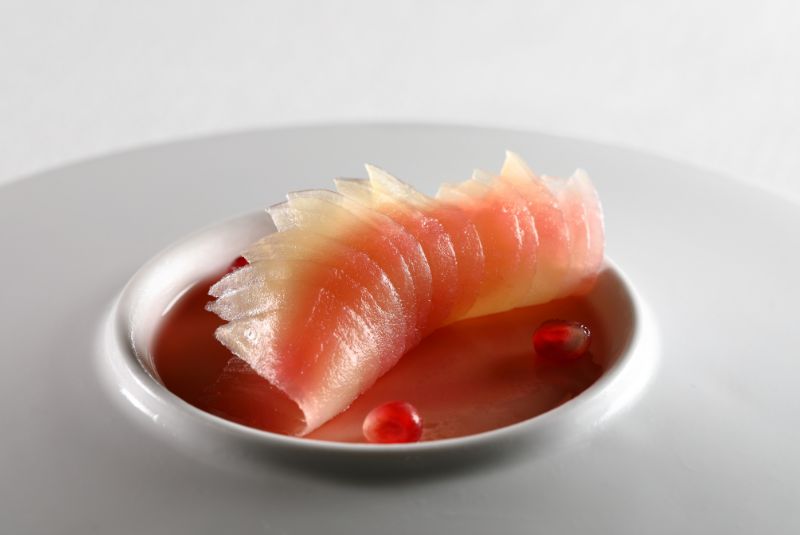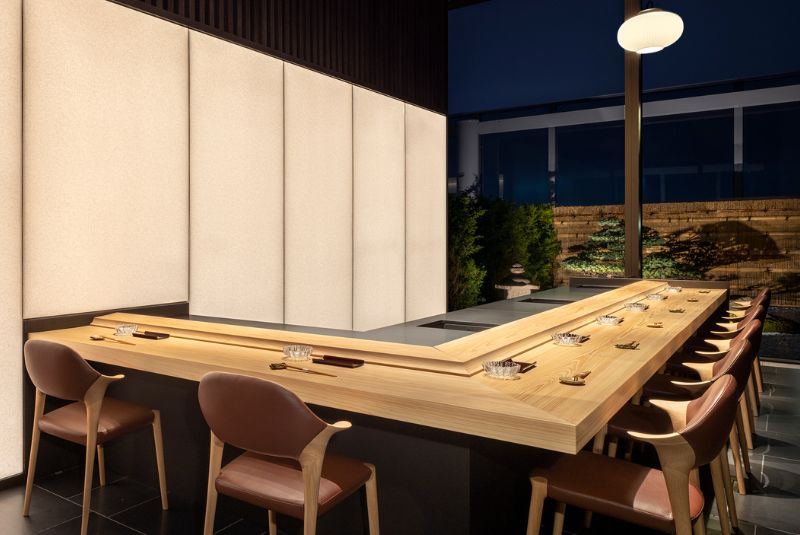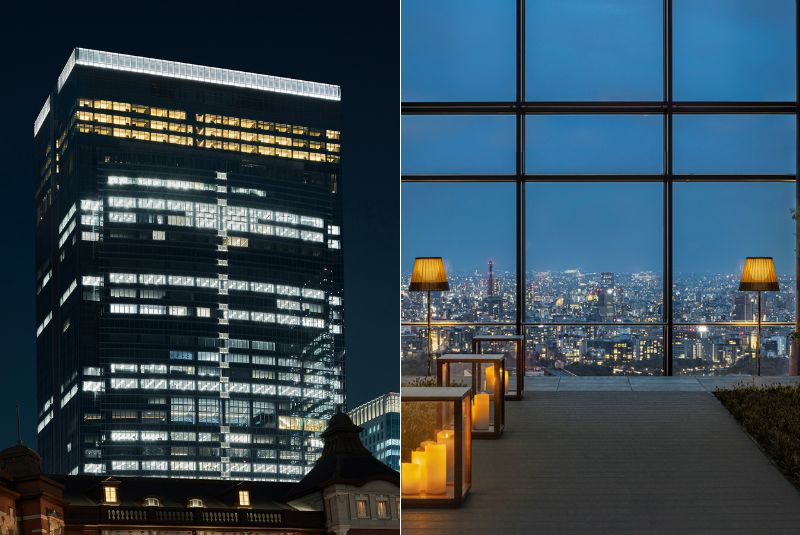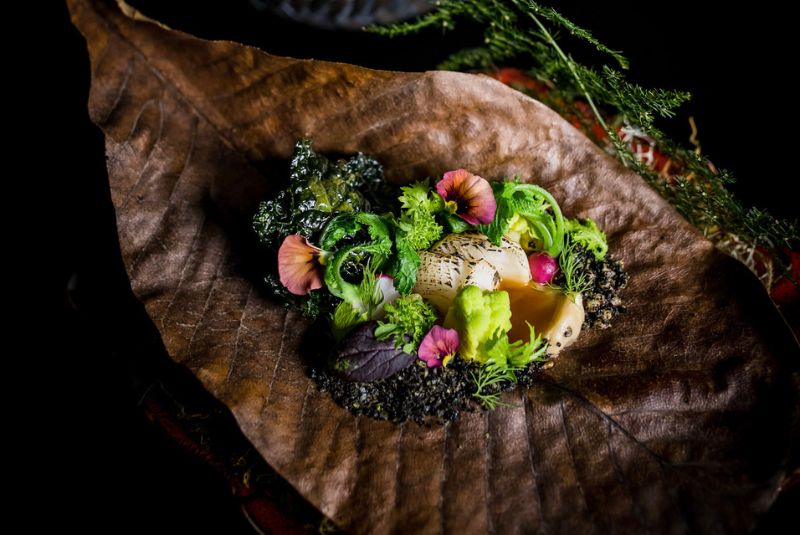With terms like omakase and kaiseki increasingly bandied about in the gastronomic world, food lovers need to understand these concepts, their origins and quirks. Long-time Kyoto resident Danielle Demetriou is your guide on this journey into premium Japanese dining culture
It’s 7pm on a Saturday evening in Tokyo and six guests are waiting for their dinner to arrive in an exclusive new sushi restaurant floating 40 floors above the streets.
Seated at an immaculately smooth, lightly scented hinoki cypress wood counter dating back 180 years, none of the diners has any idea what they are on the threshold of consuming, be it uni (sea urchin) or tako (octopus). There is, however, one guarantee: they know that whatever the nimble-fingered white-clad chefs opt to place before them, with a gentle bow of the head, will be deliciously fresh, meticulously seasonal – and most likely leave a once-in-a-lifetime imprint in each individual’s culinary memory.
Forget thumbing through menus. Perhaps the ultimate luxury in Japan’s famously multi-layered formal food world can be found in one seemingly innocuous word – omakase.
A dish from Ta Vie in Hong Kong – influenced by kaiseki traditions
Loosely translated as “I will leave it to you”, this word elevates to near-spiritual levels the trust that Japanese diners often place wholeheartedly in the chef. In short, it means that instead of choosing what they want to eat, guests leave themselves 100 per cent at the mercy of the chef, to decide and serve whatever they so happen to desire on that particular occasion.
The gourmet equivalent of a high-end blind date, for some diners, the idea of abdicating all control over what ends up on the dinner plate (or wood counter) – particularly when the waiting list is long and the price tag is high – might fill them with an appetite-halting horror.
In a world of so much choice, however, others feel an inner sense of almost child-like relief when settling down for an omakase meal, having removed the mental weight of menu perusing, dish choosing and drinks pairing discussions from the culinary experience.
It's also, for the concept’s many admirers, a guarantee of the best possible meal – as the chefs are free to use the tastiest and most fresh and seasonal ingredients available on that specific day (an important consideration in a country where there are countless micro-seasons, with some ingredients enjoying only a few fleeting days a year at their flavour peak).
The hinoki cypress counter at Hoseki in Tokyo
And perhaps most importantly, omakase is the ultimate sign of trust and respect for the person preparing dinner. It gives chefs the absolute freedom and space to express themselves to their maximum creative potential, which almost always ensures a deeply rewarding experience for both chef and diner.
It’s no surprise that this culinary trend is rooted in Japan. Respect is deeply engrained into the DNA of Japanese society, reflected in its sensitivity to a collective sense of harmony across daily life, from the lack of litter in streets and punctuality of trains to the nation’s legendary omotenashi, or mindful hospitality.
So this deep sense of respect in a chef – and their choice in terms of what to cook – no doubt comes naturally to Japanese diners. And it’s been this way for centuries. This is reflected in the iconic world of kaiseki, a formal banquet-style of eating born from Japan’s tea ceremony culture – which many contemporary chefs (Noma’s Rene Redzepi among them) believe is the original inspiration behind the emergence of modern European tasting menus.
During a kaiseki meal – still regularly served today in exclusive high-end traditional restaurants or in the private confines of tatami mat rooms in traditional ryokan inns – guests similarly do not choose what they eat, but are instead presented with around a dozen courses of exquisitely prepared seasonal dishes.
Omakase restaurant Hoseki recently opened on the 40th floor of the Bulgari Hotel Tokyo
One key difference, however, is the fact that kaiseki is highly ritualised and carefully choreographed, with the food type and order of each course abiding to strict traditional codes. This ranges from the seasonal essence of a selection of small dishes served on a single dish in the second course, known as hassun, to sashimi during the mukozuke course, plus the presence of a lidded dish, such as a soup, known as futamono.
Omakase, however, typically involves a deeper element of creative freedom, flexibility and spontaneity – with the best chefs adjusting their creations depending on the tastes, dietary preferences, appetite levels and even moods of the guests. A chef in Japan recently described a whole raft of potential factors – the vagaries of the weather, his mood, his walk to the restaurant – that potentially influenced him in terms of what ends up being served to customers that night.
While the roots of this dining style are no doubt entwined with the heritage of kaiseki, experts maintain that omakase as a defined entity is a more recent phenomenon: more precisely, a legacy of Japan’s Champagne-flowing bubble years in the 1990s.
According to culinary history, a rush of newly affluent diners in Japan were suddenly able to afford the most expensive of sushi treats in top restaurants, yet were unsure about how or what to order. The omakase concept reportedly came to life in order to minimise the potential discomfort or embarrassment of diners when it came to ordering.
SingleThread in California utilises Japan’s omotenashi hospitality outlook
Yet for all its apparent novelty, there are countless reflections of Japan’s ancient culture inherent in the omakase ritual: in particular tea ceremony and its unique, elemental concept of ichi-go ichi-e, a phrase which refers to a single once-in-a-lifetime moment, never to be repeated.
Back in that 40th floor sushi restaurant – newly-opened Hoseki at the Bulgari Hotel Tokyo, looking down on the Otemachi district – chefs smoothly place a surprise cornucopia of delicious sushi treats on the hinoki wooden counter in front of each guest: exquisite firefly squid, fatty tuna, melt-in-the-mouth uni, anago eel, with bite-perfect rice from Gifu Prefecture.
Omakase typically extends to the drinks too, with staff in kimono smoothly, quietly pairing the cuisine with the clear, fresh nihonshu sake, Tanaka Rokujugo from Fukuoka Prefecture.
At one end of the counter, Silvio Ursini, executive vice-president of Bulgari Hotels & Resorts, contemplates the joys of dining omakase-style. “I love omakase, 100 per cent,” he says. “I have enjoyed amazing omakase experiences across Japan. One place in Kyoto in Gion was one of the most incredible food experiences of my life. Unique and magic. And for sure, I think omakase has influenced European cuisine, just as kaiseki influenced the whole world of Nouvelle Cuisine from the 1970s.”
And diners watch the chefs continue to prepare the next round of sushi, wondering what could possibly be coming next, just like tea ceremony, it’s a perfect once-in-a-lifetime omakase moment – one never to be repeated and always treasured.
Use our city guides and consult the refreshed 50 Best Discovery gastronomic search engine for thousands more restaurant and bar recommendations across the world. Start planning your next adventure today.
.jpg)
